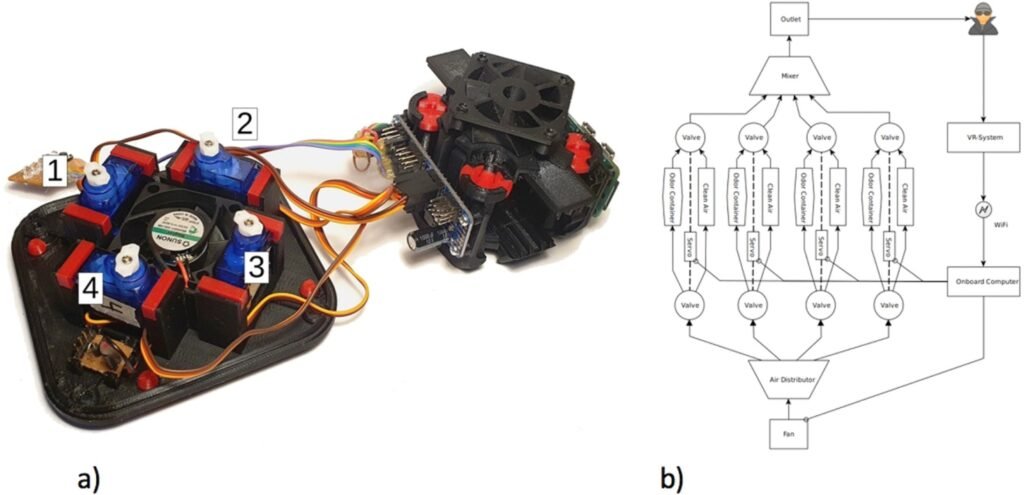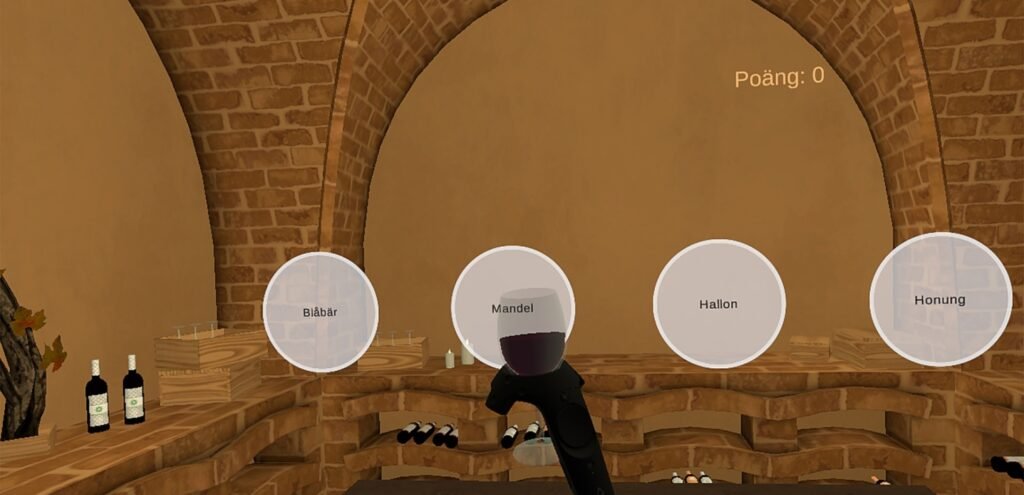Were developed an open code device that allows to include the smell in virtual reality and a game where you feel wine smells.
Source: Interesting Engineering
Researchers at Stockholm University and Malmo University in Sweden have collaborated to develop technology that adds the ability to smell in virtual reality (VR) environments, a press release said. To demonstrate their technology, the researchers created a wine-tasting game where players get points for guessing the right aromas of the beverage.
Computer games have always been about moving images on the screen. Even before Pac-man, we have only relied on the sense of sight to get involved in the game. Over the years, sounds became an integral part of the gaming experience, but now the research team led by Jonas Olofsson, a professor of psychology at Stockholm University, wants the sense of smell also to be engaged.
How the technology works?
To engage the nose, the researchers built an odor machine consisting of four valves, each connected to a channel. Right in the center of the device is a fan that sucks air into a tube. The entire setup can be controlled using a computer, where each channel can be opened to different degrees to create a blend of scents.

The researchers tested the device in a game where the players had to smell the wine in a VR wine cellar. The scent blends could mimic the aromas of a real wine glass, and with the increasing level of difficulty of the game, the complexity of scents also increased.
“In the same way that a normal computer game becomes more difficult the better the player becomes; the scent game can also challenge players who already have a sensitive nose,” said Olofsson in the press release. “The scent machine can even be used to train wine tasters or perfumers.”

3D printing compatible and open-sourced
Like most new developments, the odor machine can be built using a 3D printer. In a commendable move, the researchers have put all the necessary blueprints, instructions, and code in the public domain. This also includes the code for the wine-tasting game.
According to Simon Niedenthal, an interaction and game researcher at Malmo University, placing the information in the public domain leads to it being more accessible and reproducible, and allows for comparison of research results. Additionally, it also reduces the cost of equipment, thereby making it available to more people, the press release said.
As an immediate application of the technology, the researchers recommend using it to train people who have lost their sense of smell following a coronavirus infection. Smell training is a medically recommended method for those who experience loss of smell; however, people stop training as it becomes boring.
“I hope that the fact that drawings and code are openly available as “open source” will lead to an opportunity for game companies to start creating new, commercial products for scent training using the new technology,” Olofsson added.
Only missing a device that includes tact, which detects not only vibration, to create a completely immersive game.


